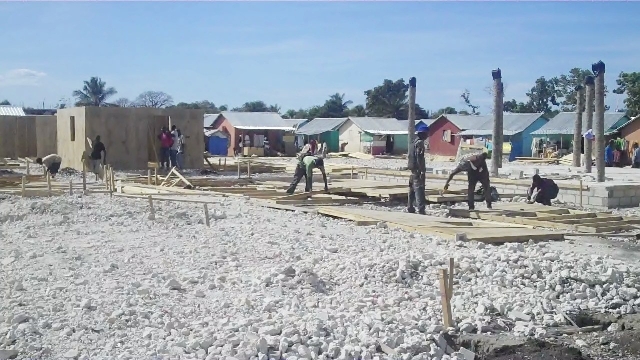
Haitian workers construct transitional shelters at Annexe de la Mairie, a Red Cross-funded housing project.
It took me a few days to begin to process what I saw and how I felt during my first trip to Haiti.
The truth is, even most sincere effort to illustrate my experience will fail to capture the truly idiomatic essence of Haiti.
With no reference to distinguish before and after the January 2010 earthquake, my colleagues’ counsel as to what I could expect landed on deaf ears. Yes, I knew that even before the quake Haiti was the poorest country in the western hemisphere … but what did that mean? (Literally, it meant the majority of Haitians were living on about USD $2 per day)
Immediately after the earthquake, Americans were flooded with images of seemingly insurmountable destruction. Broken homes, broken families, broken bodies. Stories of survival and the sudden influx of aid and resources sprinkled parcels of hope here and there for Haitians, and my heart went out to them. But with an ocean between us, I had a hard time relating to exactly what they were going through.
I will never truly understand what the people of Haiti have endured. Not just from the earthquake, but in general. Haiti is a country of contrasts. Economically, geographically, culturally and linguistically; it is at once beautiful and tragic, resourceful and devastated.
It wasn’t until my third day there that I saw first-hand an image that I had before only passively viewed on TV. We were on our way back to the office from a day of American Red Cross partner site visits – including transitional shelter construction and permanent home reconstruction programs – when our driver took a side route. Until that point, we’d traveled mostly on main roads, littered with treacherous pot holes, burning garbage, sidewalk markets and the occasional mound of rubble. But none of that compared to this: A bi-level home, preserved in its original form and structure on top…but the top was now the bottom.
It was like someone came along and tried that trick where you yank the tablecloth out from under all of the settings without them falling over. Except, they did fall over. Well, not over, just down. I remember saying “Wow!” and involuntarily gasping as my first thought was “how could anyone possibly escape that?” Most likely, they didn’t.
Now, as I prepare to return to Haiti in January, it’s somewhat comforting to realize that such an image is not as common as it was almost two years ago. I’m proud to work with an organization that is playing a significant role in sustainable recovery efforts. I’m also really glad to be surrounded by people on both sides of the ocean whose hope and positive focus on the future is a daily inspiration for the present.
